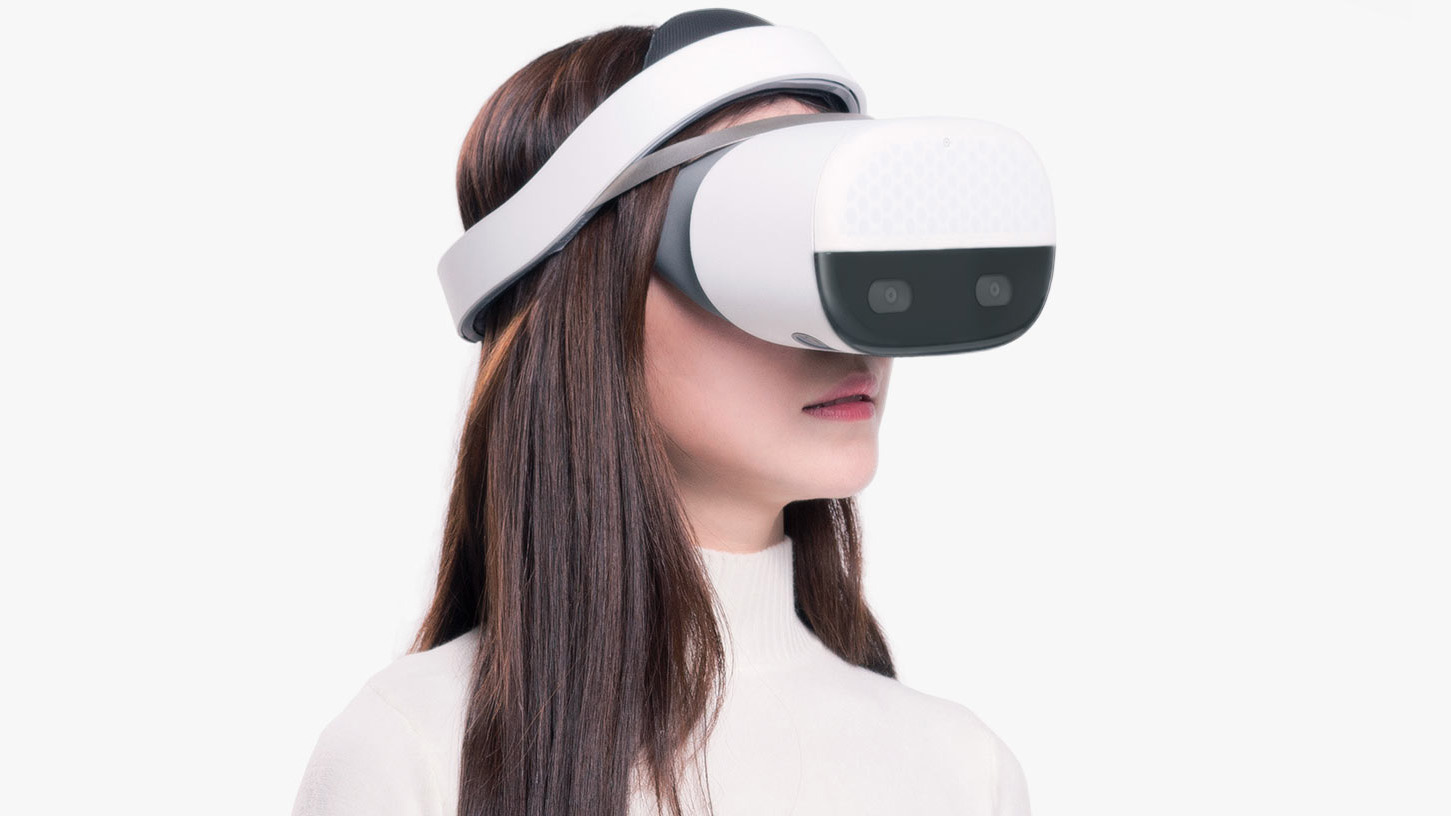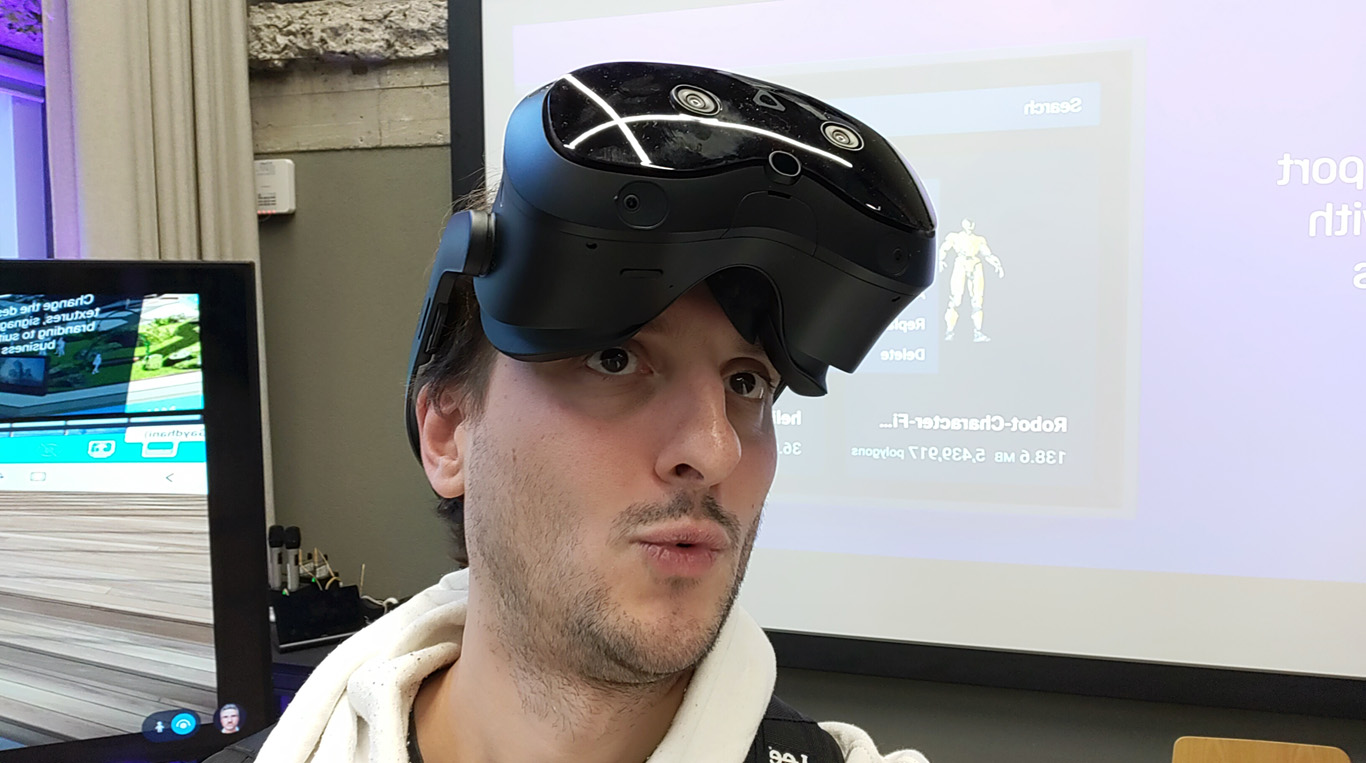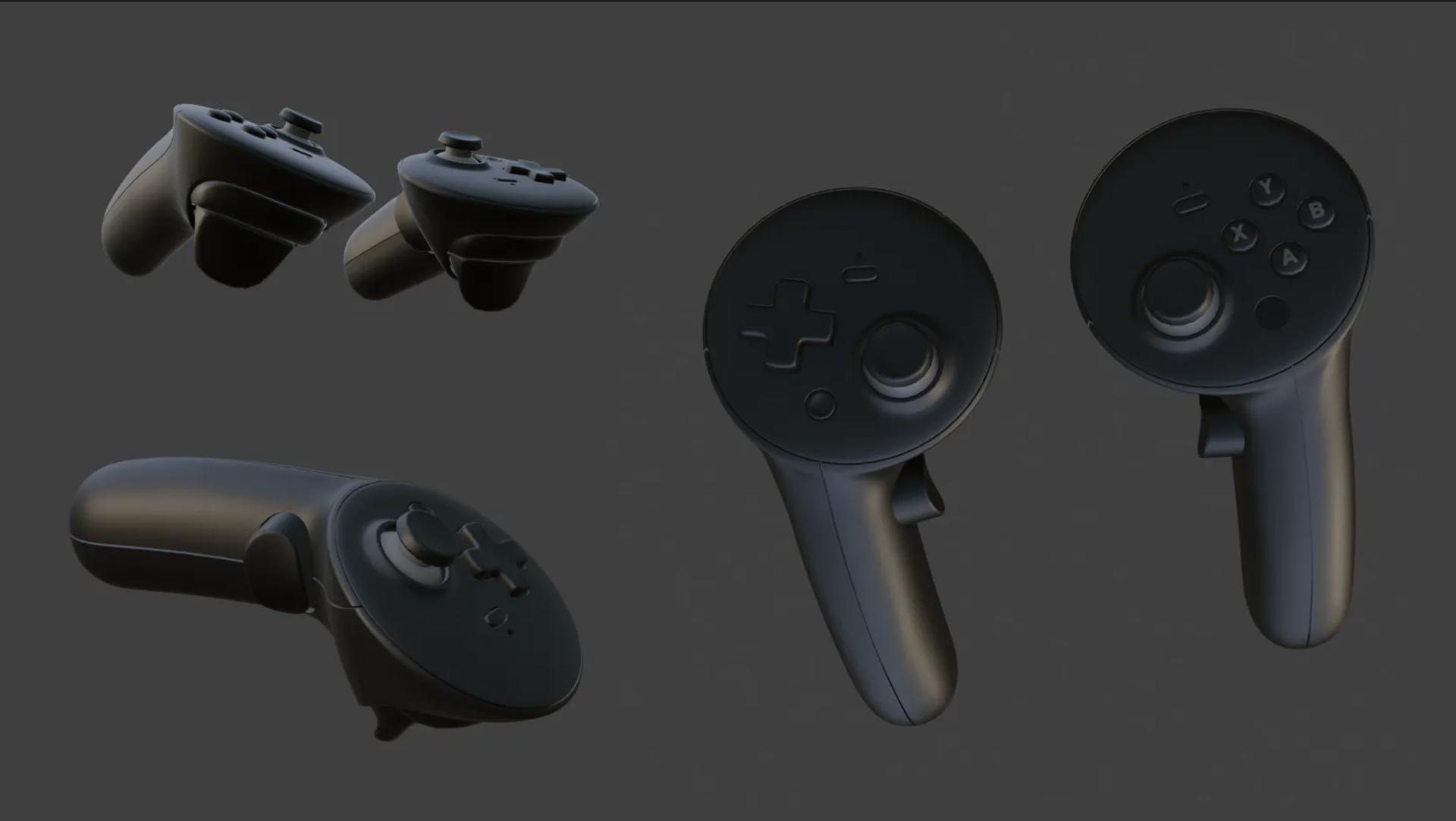Pico announces Neo, a completely 6DOF VR headset, and Zense depth cameras
We all know that standalone is the latest trend of virtual reality headsets because all-in-one HMDs are more comfortable and work out of the box. That’s why Vive has recently announced an interesting 6 DOF device called Vive Focus, while Oculus has two products in line for launch: the cheap Oculus Go and the premium Oculus Santa Cruz, that should feature 6 DOF controllers and headset. But a new player has just entered the field with an interesting product: it is Pico, with the just-announced Pico Neo.
Pico is a Chinese company founded in 2015, that is focused on creating mobile and standalone headsets. I know it well since my buddy Max, when he returned from the Gamescom this year, told me he tried there the Pico Goblin standalone 3DOF headset (something like Oculus Go) and came out pretty impressed by it. And considering it is a very cheap device (it costs $269, that is very few, even if it is more than Oculus Go…), I became interested in it.

It seems that this company has decided to follow completely the path of Oculus, since after the release of the Goblin (that is similar to Oculus Go), yesterday it has decided to announce a new device, the Pico Neo, that is a 6 DOF headset with two 6 DOF controllers (so something like Oculus Santa Cruz). As they stated in their press release, they’re the first company to officially announce such kind of headset, so kudos to them!

When I reviewed the Vive Focus, I highlighted how it was really awesome that HTC had produced a standalone 6 DOF headset that let the user move freely inside his/her room, but I was puzzled by Vive’s decision to implement only a 3 DOF controller, something similar to the Gear VR remote. Surely this choice has been taken because of technical reasons (implementing 6DOF controllers while using inside-out tracking is far from easy) or business constraints (if a headset costs too much, no one is going to buy it), but this is a problem anyway. This means that you can’t interact properly with virtual reality environments, you can’t take objects with your hands and move them. This is a problem for gaming, but also for business applications: think about developing a training experience without letting the user use his own two hands!
Pico solves this problem with Neo: it puts two remotes into your hands, and these are tracked both in orientation and position. So, they are not ergonomic controllers like Oculus Touch but are more like wands, so I imagine some kind of interactions more similar to the one of Vive games than the one of Rift experiences. If you’re wondering how the tracking happens, you should know that it has been made thanks to ultrasonic sensors. It is interesting that after years when in VR we saw only optical tracking, we now start seeing different tracking technologies for the controllers: Pico uses ultrasound, while Magic Leap uses magnetic field. The field of view of the tracking of such devices is 160 degrees, so as long as your controllers are there, you should see an optimal tracking. Outside it, I can imagine something similar to the tracking of Microsoft Mixed Reality headsets controllers, for which when tracking is lost, at the beginning there is dead reckoning tracking, and in the end, the controller halts waiting to become visible again. About tracking precision and reliability, there is currently no hands-on for this device, so we have absolutely no idea there are currently some hiccups with the tracking of the headset and more serious issues with the tracking of the controllers (according to this review on Road To VR). The company plans to solve these problems before the official launch, though.

About the other technical specs, the headset is based on Qualcomm Snapdragon 835 VR reference design, exactly the same of Vive Focus and of more other headsets that are to come. It features:
- 3K display (one LCD 1440×1600 display per eye,
AMOLED for the western version, LCD for the Chinese version, as stated by Road To VR) - 90Hz framerate
- 101° field of view
- built-in dual speakers with 3D audio
- 4GB RAM
- 64GB UFS2.0 ROM
- support for 128 GB expanded storage.
- three-hours battery life
- breathable cloth material
As you can see, the display (especially the framerate) and the ability to have two 6DOF controllers, triggering bimanual interactions, make it a very compelling device, in my opinion even more interesting than the Vive Focus. The software platform in the Chinese Version will be exactly the same as Vive Focus, that is Viveport for the content and Vive Wave for the open developer APIs. So, even if the device is a Vive competitor on the hardware side, it is a partner on the software side: this is why Vive president is so happy about its release.
FYI. Their Consumer version with one 3dof controller is 3999rmb and their Business version with 2 6dof controllers is 5299rmb. 101-degree FOV/3K-LCD screen. Shipping in China end Jan 2018. pic.twitter.com/s0bstOWH4U
— Alvin Wang Graylin (汪丛青) (@AGraylin) December 26, 2017
There is little information about the software platform on the Western market (still Viveport? Or Daydream?), but it is sure that there will be a western version because it is already possible to preorder the device on the US page (if you’re a developer or a business customer).

The price? Well, being a superior device than the Vive Focus, it obviously costs more: you can take it home for $749. It is surely not cheap, considering that a Vive Focus costs $600, exactly as a full-fledged HTC Vive. That’s why they’re targeting business customers: no consumer can be interested in a device that is so expensive and has currently few dedicated content. On the enterprise side, instead, for training applications or such, it can be awesome. There’s anyway a version that is almost the copy-paste of the Vive Focus (only one 3DOF controller), that has a price that is the copy-paste of the Vive Focus. As you can see from the above post, shipping in China is coming to the end of January 2018. We 老外 (foreigners) will have to wait more to be able to try such interesting devices.

Apart from this interesting headset and some partnerships with important companies for the use of such technology, Pico has also made another interesting announcement: the Zense depth camera. This is a piece of news that has been almost ignored by VR outlets, but in my opinion, it can be very interesting for our ecosystem, too.

You know very well that I worked with full body virtual reality using Kinects and that I think that it is the future of VR since only with the full body you can really feel immersed into VR. Cameras like Kinect are the best way to perform it since they let the user live full body VR without wearing suits. The problem is that Kinect is now dead and the alternatives are very few, with Orbbec being the best of them.
Well, Zense, that comes in two flavors, can be an interesting alternative. As you can read from the press release, their characteristics are:
[…] the DCAM100 and DCAM710 – as its core hardware products. The two camera modules are based on TOF technology and feature small form factors, economic power consumption, clear imaging, VGA standardized precision, and can be used in the range width from 0.2 meters to 8 meters.
0.2 to 8 meters is a fantastic range for full body tracking in VR. Furthermore, being 69mm x 25mm x 21.5mm, they’re very little and thanks to the 1.5W power consumption, they can be put easily everywhere, without the need of bulky adapters as the ones of Kinect v2.

But what excites me is the SDK, that should offer very interesting features:
Developers can create applications that help them save a lot of up-front development time by focusing directly on features such as gesture recognition, skeletal point extraction, perceptual ranging, face recognition, real-time autonomous positioning and mapping, and even augmented reality.
Have you read “skeletal point extraction“? Well, if it works the right way, it can enable full-body VR. And have you read “real-time autonomous positioning and mapping, and even augmented reality“? This can mean that such a camera can enable AR applications, too. As with every depth camera, the possibilities are infinite, everything depends on how many features are actually implemented inside the SDK. We’ll see. I’ve written Pico asking for more information and I’ll update this post if I’ll receive them.

The sad news is that such devices work only at 30FPS (that’s too few for VR tracking) and have a very limited field of view: only 51° horizontal FOV… I can assure you that Kinect v2 was much more (84° according to this source). So, it is too early to dream, but I hope that Pico will continue improving its products.
If you want to preorder them, their price is $299… again, not that cheap and affordable only for developers and enterprise customers.
So, Pico wants to be an innovator in the VR and perceptual computing ecosystems and I think that it is releasing very interesting products, especially for the enterprise market. What is your opinion about them? Will you buy a Neo headset or a Zense camera? Let me know in the comments!
(Header image by Pico)
Disclaimer: this blog contains advertisement and affiliate links to sustain itself. If you click on an affiliate link, I'll be very happy because I'll earn a small commission on your purchase. You can find my boring full disclosure here.




about the Zense, “Developers can create applications that help them save a lot of up-front development time by focusing directly on features such as … skeletal point extraction,…” tells me that there’s no high-level skeleton out of the SDK (sigh). And hw specs are worst than the Kinect v2 (70° hfov for the latter), can’t remember the Orbbec. so we are far from a Kinect substitute.
about th Pico Neo, nice specs, it’s just what I want – better if with a Leap Motion next gen integrated, as of what showed last spring from Qualcomm and Leap Motion. yet, it is the first exemplar of the new trend (all in one, 6-dof) which I bet will soon be the standard for both consumer/gaming and professional applicatons. thanks a lot fot prompting it. best wishes for the new year.
Thanks for your feedback about the Zense… as I’ve said in the article, I agree on the fact that it is promising, but it’s far away from Kinect v2. Anyway, I’ve contacted Pico about the skeletal tracking and I’m waiting for an answer… I really hope they’re interested in that. Because if they are, maybe a Zense v2 can be something interesting for us…
The Neo is cool… IMHO it just lacks ergonomic controllers as Oculus Touch! This Chinese company is making a great job.
With you a wonderful 2018 in VR!